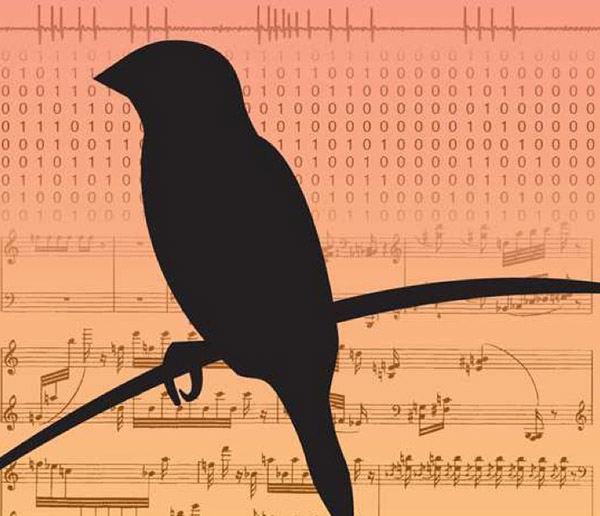Song birds
How they train their brains to give a little whistle

Songbirds learn to sing in a way similar to how humans learn to speak—by listening to their fathers and trying to duplicate the sounds. The bird's brain sends commands to the vocal muscles to sing what it hears, and then the brain keeps trying to adjust the command until the sound echoes the one made by the parent.
During such trial-and-error processes of sensorimotor learning, a bird remembers not just the best possible command, but a whole suite of possibilities, suggests a recent Emory study.
The Proceedings of the National Academy of the Sciences (PNAS) published the study results, which include a new mathematical model for the distribution of sensory errors in learning.
"Our findings suggest that an animal knows that even the perfect neural command is not going to result in the right outcome every time," says Ilya Nemenman, an Emory professor of biophysics and senior author of the paper. "Animals, including humans, want to explore and keep track of a range of possibilities when learning something in order to compensate for variabilities."
Nemenman uses the example of learning to swing a tennis racket. "You're only rarely going to hit the ball in the racket's exact sweet spot," he says. "And every day when you pick up the racket to play, your swing is going to be a little bit different, because your body is different, the racket and the ball are different, and the environmental conditions are different. So your body needs to remember a whole range of commands, in order to adapt to these different situations and get the ball to go where you want."
First author of the study is Baohua Zhou, a graduate student of physics. Coauthors include David Hofmann and Itai Pinkoviezky (postdoctoral fellows in physics) and Samuel Sober, an associate professor of biology.
Traditional theories of learning propose that animals use sensory error signals to zero in on the optimal motor command, based on a normal distribution of possible errors around it—what is known as a bell curve. Those theories, however, cannot explain the behavioral observations that small sensory errors are more readily corrected, while the larger ones may be ignored by the animal altogether.
"The birds are not just trying to sing in the best possible way, but appear to be exploring and trying wide variations," Nemenman says. "In this way, they learn to correct small errors, but they don't even try to correct large errors, unless the large error is broken down and built up gradually."


